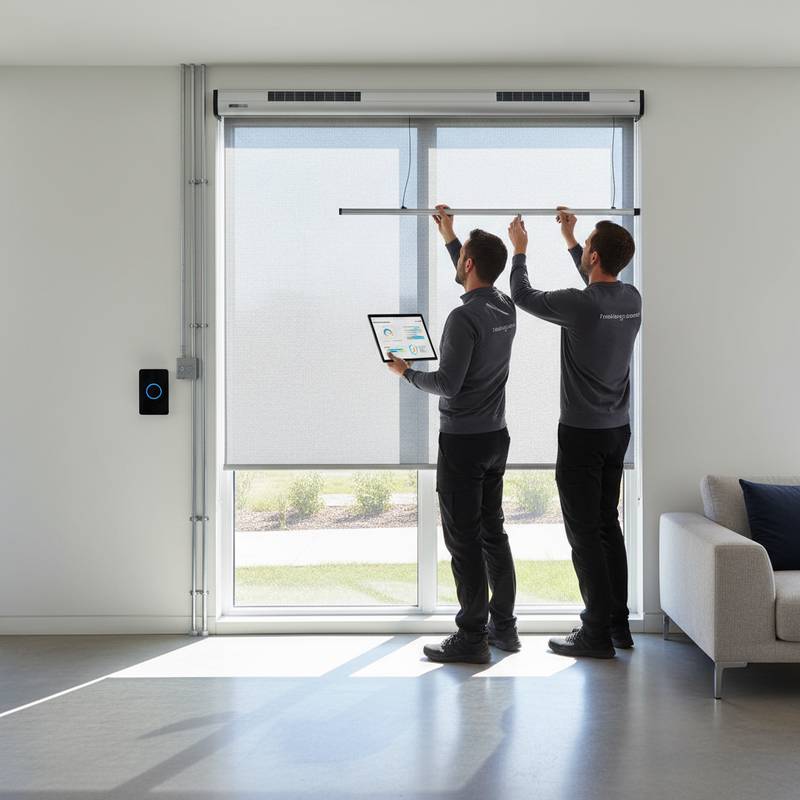How Smart Blinds Deliver $800 in Annual Energy Savings
Smart homes prioritize efficiency, comfort, and tangible financial benefits. Automated window coverings represent a key advancement in this domain. These systems manage sunlight exposure to achieve substantial energy reductions, often amounting to $800 per year.
Consider a residence that automatically modulates its window treatments based on solar intensity. Such functionality supports balanced indoor temperatures without manual intervention. This integration of technology fosters sustainable and comfortable environments.
Understanding Sunlight's Impact on Energy Use
Windows account for the primary pathways of heat gain and loss in typical residences. Intense afternoon sunlight elevates indoor temperatures, compelling cooling systems to operate more frequently. During winter, exposed windows permit heat to dissipate rapidly.
Research from energy efficiency experts indicates that effective shading strategies can decrease heating and cooling expenses by as much as 30 percent. Manual blinds demand regular adjustments, which homeowners often overlook. Automated alternatives employ sensors, schedules, or thermostat linkages to respond dynamically to environmental shifts.
Mechanisms of Smart Blind Operation
These devices link to home Wi-Fi networks or central hubs, accepting instructions via mobile applications, voice controls, or preset routines. Integrated sensors monitor light levels and ambient temperatures, prompting adjustments to optimize indoor conditions.
Certain models leverage smartphone geolocation to align with occupant routines, such as opening at dawn or closing upon departure. Synchronization with intelligent thermostats ensures coordinated responses that minimize energy expenditure.
Brands including Lutron, Somfy, and IKEA offer diverse options in automation, aesthetics, and pricing. Available in various fabrics and designs, these products serve dual purposes as functional tools and interior enhancements.
Factors Driving Significant Savings
Primary benefits arise from alleviating demands on HVAC systems. Blocking peak sunlight prevents temperature spikes, reducing air conditioning runtime by several degrees. In colder seasons, strategic openings capture passive solar heat to offset heating needs.
Analysis from recent energy studies reveals that combining automated blinds with smart thermostats yields annual savings of $600 to $800. Results depend on regional climate and property dimensions, yet benefits persist across moderate areas. Installations prove most advantageous in structures featuring expansive glazing or sliding doors.
Integrating Smart Blinds into Daily Routines
The practical enhancements extend beyond financial metrics. Residents experience mornings illuminated softly by controlled light, eliminating abrupt wake-ups. Living spaces maintain steady coolness during summer peaks without user input.
Privacy and security improve through programmable cycles that simulate occupancy during absences. Pairing with surveillance and illumination systems establishes comprehensive protocols for reassurance.
Families benefit from tailored settings, such as dimmed rooms for naps or illuminated spaces for mornings. Pet guardians appreciate automatic adjustments that mitigate overheating risks on warm days.
Enhancing the Smart Home Ecosystem
Smart blinds excel within interconnected frameworks alongside lighting, climate regulation, and assistants. Compatibility with platforms like Google Home, Amazon Alexa, or Apple HomeKit enables voice-activated control and synchronized sequences.
A bedtime command might simultaneously lower blinds, soften lights, and set the thermostat for rest. Morning activations reverse these actions, introducing daylight alongside routine starters like automated brewing.
This orchestration creates responsive habitats attuned to user behaviors. Unified operations amplify overall efficiency compared to isolated components.
Addressing Common Adoption Challenges
Initial costs for automation have historically deterred widespread use. However, innovations in materials and installation processes now render options more accessible. Retrofit kits adapt existing coverings, avoiding complete overhauls.
Rechargeable batteries simplify deployment for tenants or those avoiding wiring. Operations remain silent, with power sourced from USB ports or solar elements to minimize upkeep.
While experts offer setup services, guided applications and guides empower self-installation. Data security concerns prompt manufacturers to implement encryption and regular updates. Selecting established providers and maintaining firmware safeguards connected setups.
Promoting Environmental Sustainability
Energy reductions from automated shading directly contribute to lower carbon emissions. When combined with efficient glazing and thermostats, impacts multiply.
Select models incorporate recycled or responsibly harvested materials, aligning with values of environmentally aware users. This approach supports broader transitions to eco-friendly home modifications.
Advancements Shaping Window Automation
Emerging sensor technologies and machine learning promise predictive capabilities. Systems may adapt to personal patterns and meteorological data for proactive adjustments. Linkages to solar energy and usage trackers will refine optimization further.
Vendors introduce subscription services for updates and support, ensuring longevity. Declining costs and enhanced compatibility will drive broader implementation.
Achieving Seamless Energy Optimization
The appeal of smart blinds lies in their unobtrusive effectiveness. They manage light, climate, and seclusion passively, delivering comfort and cost reductions without lifestyle alterations.
Homeowners seeking bill reductions should consider this upgrade as an accessible entry point. It merges elegance with utility, fostering conservation through intuitive design. Such innovations demonstrate how effortless sustainability enhances quality of life.
